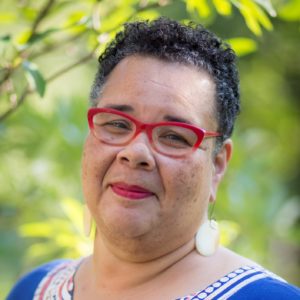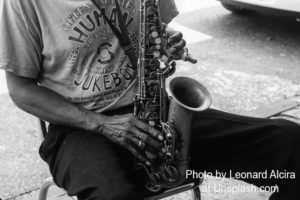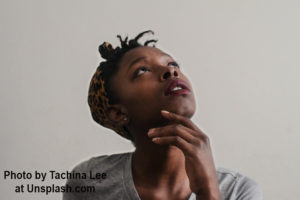
Teach Curiosity, Witness Beauty
Several years ago, I was expecting a guest speaker in one of my courses. To prepare for the colleague’s visit, I asked my students what questions they had for the person. Silence. And not a quizzical silence, just a dead silence. I tried to prime the pump by repeating the guest’s research agenda as well as the topics of our course’s conversation. The response by students was underwhelming – the not so faint sound of crickets could be heard. I signaled my dismay by using a displeased tone of voice and reminded the students that they must have questions. In distress, a woman blurted out, “I don’t have any questions!” I realized she meant that she did not have any deficits. She thought questions only signaled what she was supposed to know, but did not. Questions, for her, were a confession of inadequacy, unpreparedness, and ignorance. I had failed to teach that questions were tools of curiosity and a method of inquiry to interact with the guest lecturer. Since that moment, I have been trying to cultivate and nurture student curiosity.

In this journey, I have learned that what I am curious about is not necessarily what my students are curious about. I have learned that some students have no curiosity for classroom learning because their energies are tied up in modes of survival, credential earning, and the distractions of family and wage earning. These students are difficult to gather-in. I have learned that students have been told that their genuine curiosity is without merit, so they have learned not to voice their real questions or pursue their authentic passions. I have learned that some deep, marvelous curiosity is voiced in a language/vocabulary that is academically unsophisticated and I have worked to train my ear to hear these curiosities. I have challenged myself to “think like my students” and try to anticipate the kinds of questions and inquiry they will levy toward a reading or learning activity. I want to align with them and use their inquiries as starting points. I’ve had some success with this tactic – but it’s not easy.
Mostly I’ve learned that students are so eager-to-please that when I tell them they are to formulate their own genuine curiosity about a topic – they do.
Last semester I had two kinds of assignments in my seminar. First, the students were to consider the assigned readings, then like jazz musicians, riff off of the author’s argument. I called them Riff Reports. The instructions were to bring to the class a report about what the reading sparked in their thinking and imagination. I challenged them, “Bring your own insights, curiosity – do not repeat the reading, do not report the reading. Consider your own passion, interests, situations, then build, expand, add your voice, perspective, and idiosyncrasies to the conversation.” At the beginning of the semester, I modeled in class sessions what I meant by Riff Reports by doing my own version of riffing off of the readings. In my three-hour session, I would do a one-hour riff, then two students, each taking 30 minutes, would riff off of the same reading. This would give the class three riffs from one reading – a cornucopia of meaning and wonder!
 Second, by the end of the semester, the students completed a Curiosity Report, building off of the reading, their Riff-Reports, my Riff-Reports, and the conversations we had in class sessions. The Curiosity Report could culminate in a critical reflection essay or it could be a creative portrayal. Regardless of its final embodiment (the student’s choice), the report had to include a method of inquiry which addressed the student’s own curiosity. Students were invited to explain why this curiosity was important to them and their people. They had to sit with the librarian to create a bibliography, interview experts, and go on field trips to visit the locales needed to satisfy their inquiries. By mid-semester, students gave oral reports about their topics, questions, and inquiry methodology. By the end of the semester, students gave an expanded presentation and then handed in a written form.
Second, by the end of the semester, the students completed a Curiosity Report, building off of the reading, their Riff-Reports, my Riff-Reports, and the conversations we had in class sessions. The Curiosity Report could culminate in a critical reflection essay or it could be a creative portrayal. Regardless of its final embodiment (the student’s choice), the report had to include a method of inquiry which addressed the student’s own curiosity. Students were invited to explain why this curiosity was important to them and their people. They had to sit with the librarian to create a bibliography, interview experts, and go on field trips to visit the locales needed to satisfy their inquiries. By mid-semester, students gave oral reports about their topics, questions, and inquiry methodology. By the end of the semester, students gave an expanded presentation and then handed in a written form.
Watching and helping students formulate their own curiosity was a very different way to teach than telling them what was important, critical, or required in the disciplinary canon. Helping them develop, unearth, and investigate their own agendas was not the same as performing my passions, thoughts, and ideas for them at the front of the class. Witnessing their process of being inspired by our reading, then taking a kernel of their own idea and working it up into a full project, was very meaningful to me. This witnessing gave me a real sense of reverence for their ability to think, create, and hope – I felt as if I was witnessing beauty.

In every case, students selected topics that were personally relevant, intimately related to their life circumstances, and in some cases, life-giving. Our librarian called me to comment on the breadth and uniqueness of their topics and how interested he was to help students who were interested in inquiry. In two instances, I sent students to talk with faculty colleagues whose research interest matched the students. In both instances, the conversations were generative for both student and colleague. Finding like-minded thinkers feels like water in the desert.
At the risk of romanticizing the experience, I did have one student who, in my opinion, got lost in the process. The student preferred being told what to do and how to do it. When that was not the task, the effort needed for discovery and self-motivation was too much. The student was able to articulate a fascinating question of inquiry, but could not follow through on investigation and creative research methodology.
Pursuing curiosity requires time for introspection, consideration of on-going context and conversation, and the where-with-all to investigate. Structuring classrooms for student curiosity seems like a no-brainer, but it has taken me many years to get here.
Leave a Reply